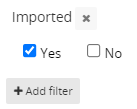Filters
Filters allow us to determine what can be seen on a client record or job by setting specific criteria to be met. In Senta, this criteria is called Filters.
Filters can apply to:
-
Form tabs
-
Form fields
-
Tasks in job templates
-
Key dates in job templates
-
Automatic Services
-
Jobs in Services
Here are some examples of using filters:
In a job - one Form available for limited companies, and a different form available for partnerships.
For setting up an automatic service - the Client take-on Service only runs for new clients, but not for prospects or former clients.
In a job - an email set up to only send to the client if they owe above a certain amount.
To show the VAT quarter field if the VAT frequency selected is "Quarterly".
Add a filter
It's the same on Forms, tasks, jobs or Services: wherever you can add a filter, you will see a button Add filter.

1. Click the Add filter button and choose which criteria you want to filter by using the field picker. The field picker will show you all fields available across the Forms in your Senta workspace, that can be used in a filter. See the Field types guide for an overview on which field types can be used in filters.
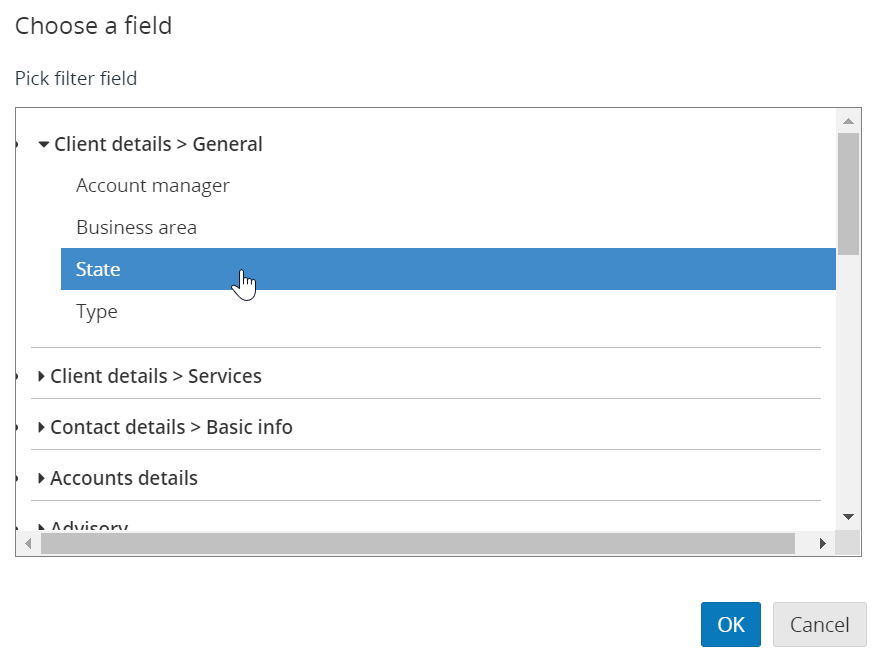
2. Once the field has been added, tick the filter options.
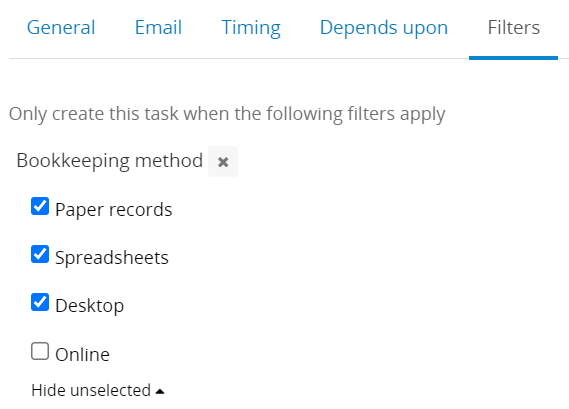
You may want to choose one filter option or multiple. If you tick multiple filter options, the criteria will be met if any one of those values is present for the client. For example, in the screenshot above, "Paper records", "Spreadsheets" and "Desktop" are selected as filter options on the task. Therefore, if the client has one of those options selected, the criteria will be met and the task will be displayed.
However, if multiple fields have been added as filters the client's data would need to match the filtering options from all fields. Using the screenshot example below, the task now has an additional field added as a filter of "State", and the selected filter option is "Client". Now the client must have a Bookkeeping method of "Paper records", "Spreadsheets" or "Desktop" and the State of "Client" in order for the task to display.

In addition to adding fields from Forms across your Senta workspace, that exist at a client-level, you can also access the Form fields from within your job template included as part of a Fill in form task and Checklist tasks.
When choosing from the field picker, find the name of your job template, and you will see all of the available fields and tasks available to add as a filters.
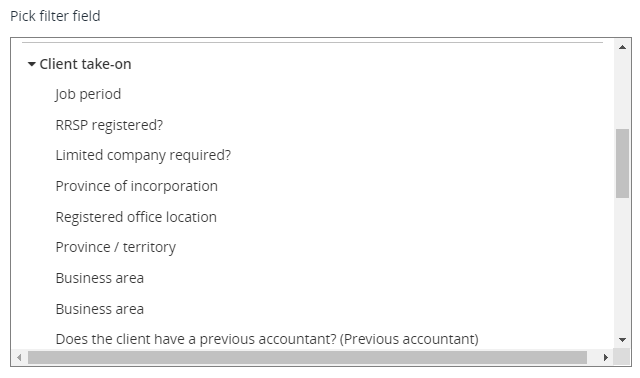
View existing filters
You can hover over existing filters to view which Form the filter has been added from.
For example, the "Date of next payroll (weekly)" field is filtered to the Payroll frequency of "Weekly" or "Weekly + Monthly". When you hover over this filter with your cursor, you can see which Form this filter has been added from:

This feature is helpful when viewing filters within jobs. If the filter has been added from somewhere within that job, the hover text will show JobIf it has been added from outside the job, this will show Form as above.
Copy filters in Tasks
If you are using the same filters across multiple tasks, use the Copy filters button under the Filters tab to choose which filters to bring through from another task.
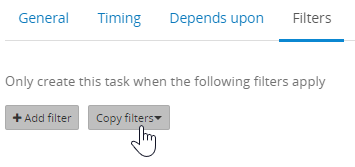
Advanced filters
Advanced filters can be found under the Advanced tab in the field picker. Select Add filter and scroll down to the bottom of field picker to find Advanced. Select Advanced to expand the section and choose your filter.
These are the Advanced filter options:
Activated users
You can use the activated users field to filter tasks to only display if a certain number of users have been activated on the client portal for a particular client.
Enter values to only meet the criteria if the amount of activated users is between two numbers.
Expression filters
You can use expressions as filters within Senta, for example, if you only want a task to display if the value of a client's field is over a certain amount.
Expression filters can be added to jobs and Services, but not Forms.
Once the Expression filter box has been added, you can type in your expression. For example, the expression below would ensure that a task only displays if the client's fees are more than £1000.
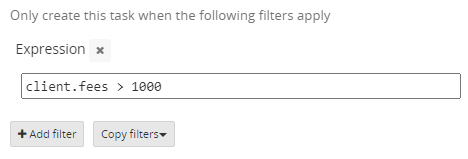
The expression below is checking whether there is a value in the primary contact's email address field. The task will display if an email address is present for the primary contact:
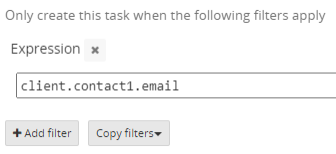
All of the Expressions that can be used within Senta can be found in the Expressions guide and if you need guidance on prefixes and field references, see our Placeholders guide.
What you need to remember when adding an Expression filter is that you do not need to use IF(). The entire Expression filter box is checking if the expression returns true or false. Therefore, rather than using IF(client.fees > 1000) as you would in a placeholder, you remove IF() entirely and use client.fees > 1000.
Imported
The Imported field can be used as a filter if you would like the criteria to be met if the client record has or hasn't been imported.
